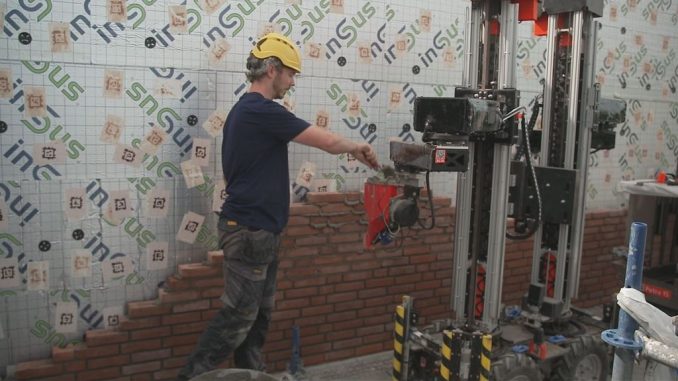
Robots replace bricklayers, ‘but automation in construction not fast enough’
On the construction site a robot that helps with holes drilling, drones that do construction inspections or a 360-degree camera that follows the progress of a construction project. Three years ago, the government presented such applications as important solutions for large staff shortages. But automating and innovating in construction is a long -term process, experts see.
The construction is originally a traditional sector where people mainly do the work. But there are not enough hands. “Labor productivity in the construction has actually risen barely since 2000,” says Jan van der Doelen, sector specialist at ING. He sees digital applications quietly becoming more commonplace, but the construction is still behind the industry.
“Robotization has taken much more shape there and productivity has risen sharply,” says Van der Doelen. He also sees that entrepreneurs have to think about how they can perform the work better and more efficiently through the tight labor market. “The construction has to continue in this way, otherwise we will get major production problems,” warns Van der Doelen.
Masonry
Due to the large shortage of masons, bricklaying robots are used here and there. The Monumentalal company now has 15 brick robots that can build walls up to 12 meters high. The robots can process around 350 stones in a day. Those are fewer stones than a bricklayer, which on average processes around 600 stones.
“But construction companies see the need, because the shortage is so huge,” says commercial director Stijn van Krimpen. And the start-up is also busy developing the robots.
“We can tighten the speed button, so that we can lay a little more stones a day.” The company hopes to be able to expand in five years with hundreds of robots that are also used outside the Netherlands.
Innovation takes a long time
The innovation process takes a lot of time, sees labor economist Ronald Dekker from the TNO research institute. That also has to do with how the construction is organized. Construction companies work with different contractors and then there are also companies that deliver the material.
“If you want to tackle construction in an innovative way, it means that all parties involved must also support it and that slows down the process,” says Dekker. The labor economist also says that schools that train the upcoming builders must also be part of that process. We have to think in a different way, for example about how to build a house automatically.
‘Thinking carefully about robotization’
According to Robotics expert David Abbink from TU Delft, there is a lot of potential in construction, but it must also be considered how technology is applied. “It is not a Silver Bullet, buy a robot, put it in and hop, you have innovated. You change the work and if you do not understand the impact on that work, it is also possible that you make it very boring. That you create annoying residual work for people.”
Robots are therefore not the goal, but a means: “If you want to do something structurally about staff shortages, you have to innovate towards attractive work.”
Leontien de Waal, sector economist Construction at ABN AMRO, joins this. “You can’t just put down a robot. It must be able to work with colleagues of flesh and blood.” She also says that it must fit into the business process, because certain construction activities are less suitable for automation and robotization.
60,000 people
De Waal also says that the construction can no longer sit still. “Actually, 60,000 people should be added in the coming 1960s, but where are we going to get it from?” For example, more homes must be built, buildings must be renovated and new roads are laid. And that is why technology is desperately needed, she thinks.
But technology and innovation will not completely replace the professionals. “There are always people on the construction site, it will become more of a combination of people and technology.”

Be the first to comment